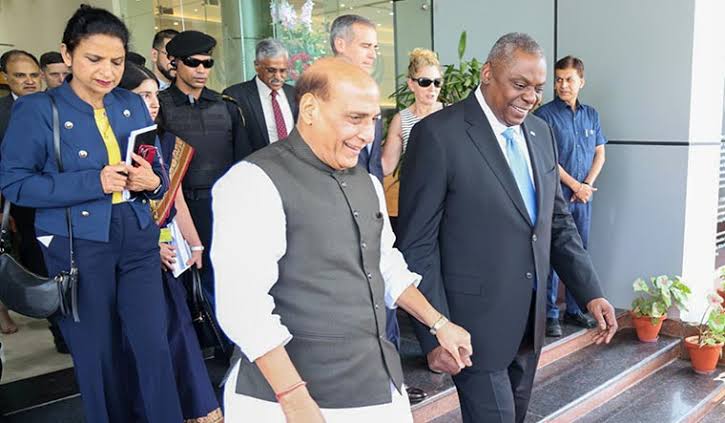F414 Jet engines deal could increase more jobs for the Americans

When US President Joe Biden is so eager to host Prime Minister Narendra Modi in Washington, DC, on June 22. The key item on the table is a deal for the powerful GE F414 engines to be manufactured by HAL in India. The deal is vital for the USA because it will help the USA not only enter the Indian Aviation market but also beat back stiff competition from others.
Presently HAL is already making engines under licence production from the Russians, the French the British and the Germans for Sukhoi fighters, Jaguar fighters, various helicopters and transport aircrafts.
Soon the expanding Indian Air Force is going in for induction of a large number of new fighters. It needs 756 fighters for a possible two-front war scenario as against the 560 aircraft it operates at present. India is also looking at a large prospective market for fighter exports. So a very large number of engines are going to be manufactured.
“Our insistence is on total transfer of technology, so we are working out the details. It is a definitive development and holds a lot of potential for manufacturing an entire range of fighter aircraft,” said an official. The state-owned Hindustan Aeronautics Limited will partner US defence major GE in the new deal.
India is also pursuing the dream of an indigenous aero-engine on an indigenous aircraft since 1986. But the indigenous ‘Kaveri’ engine―despite several prototypes―till date has not attained the power required for Tejas Mk2 f8ghters. The first indigenous fighter Tejas, inducted into the IAF in 2016, was fitted with a GE-F404 engine bought off the shelf. There was no transfer of technology. But in the new deal, only the initial batch of the F414 engines will be supplied by the US, the subsequent batches will be manufactured in India after total tech transfer.
The USA may, however, try to attach strings with the deal and that is where it is going to fail miserably. There is a strong likelihood that the F414 or its upgraded variants will be locked in as the engine of choice for several other types of fighter aircraft that India plans to produce. In effect, it will make the US think that it may be able to dictate to India. That will be the biggest mistake of Bidden and his administration. We Indians would like to encourage them to do otherwise and have deals only on basis of equality.
On June 5, Shri Rajnath Singh, Raksha Mantri and visiting US Defence Secretary Lloyd Austin chalked out a roadmap for bilateral industrial cooperation in defence. “This initiative aims to change the paradigm for cooperation between US and Indian defence sectors, including a set of specific proposals that could provide India access to cutting-edge technologies and support India’s defence modernisation plans,” said a US defence department release.
In spite of this latest development India is not replacing the traditionally close relationship with time-tested friend Russia with a closer bonding with the USA. We have been buying US equipment for long, but this is the first time that we made it very clear to the US that we needed technology transfer. As India is growing in military stature and has to thwart China, it was natural that collaboration with the US would increase.
Even amid warming ties with the US, the relationship with Russia continues. The Russians continue to provide us with huge amounts of oil at very reasonable prices. Both Russia and the US are aware of where we stand. We are not acting against Russian or American interests. We are only strengthening ourselves to deal with an aggressive China.
With the world order gradually evolving into a multipolar one from the US-dominated unipolar moment, India’s position calls for prolific multilateral engagement. That is why India is a prominent member of several multilateral groupings from the Shanghai Cooperation Organisation―where Russia and China are members―to the US-backed Quad. This has given India a lot of manoeuvrability and strategic depth.
At the same time, there is a realisation that the US would not give India cutting-edge weaponry. The F414 is not the most advanced engine. The US frontline fighter F-35 uses the Pratt & Whitney F135 engine. American weapon systems also come with a lot of conditions. Nuclear weapons cannot be fitted on US-supplied platforms nor can they be used in a war against US allies. It’s simple India will buy no such things.
At the same time, the US and the west accept that they need India. The US is facing a serious economic and military challenge it has never faced before. Just to tackle China, it has collapsed its four strategic zones―West Asia, South Asia, the ASEAN countries and the Pacific―and formed just one blanket strategic zone, the Indo-Pacific. That strategy hinges on two countries―India and Australia―the only countries in the region to slow down the pace of the Chinese challenge.
With the declining American influence in West Asia and Africa, India is the only stable strategic geography to manage the expanse from the Arabian Sea to the Bay of Bengal up to the ASEAN region―the reason why the US needs India as a strategic partner.
At the same time, India is pivotal for the Russian effort to challenge the dollar’s dominance. Russia also needs India for a number of its strategic and economic goals. While Russia is the prime mover behind the de-dollarisation move, India is considered part of the broader push.
India has in recent years is becoming more atmanirbhar in defence manufacturing. It has also tried to broad-base its sources of weaponry and military equipment it still imports. The central idea is to avoid excessive reliance on one country and make sure that options are always available.




